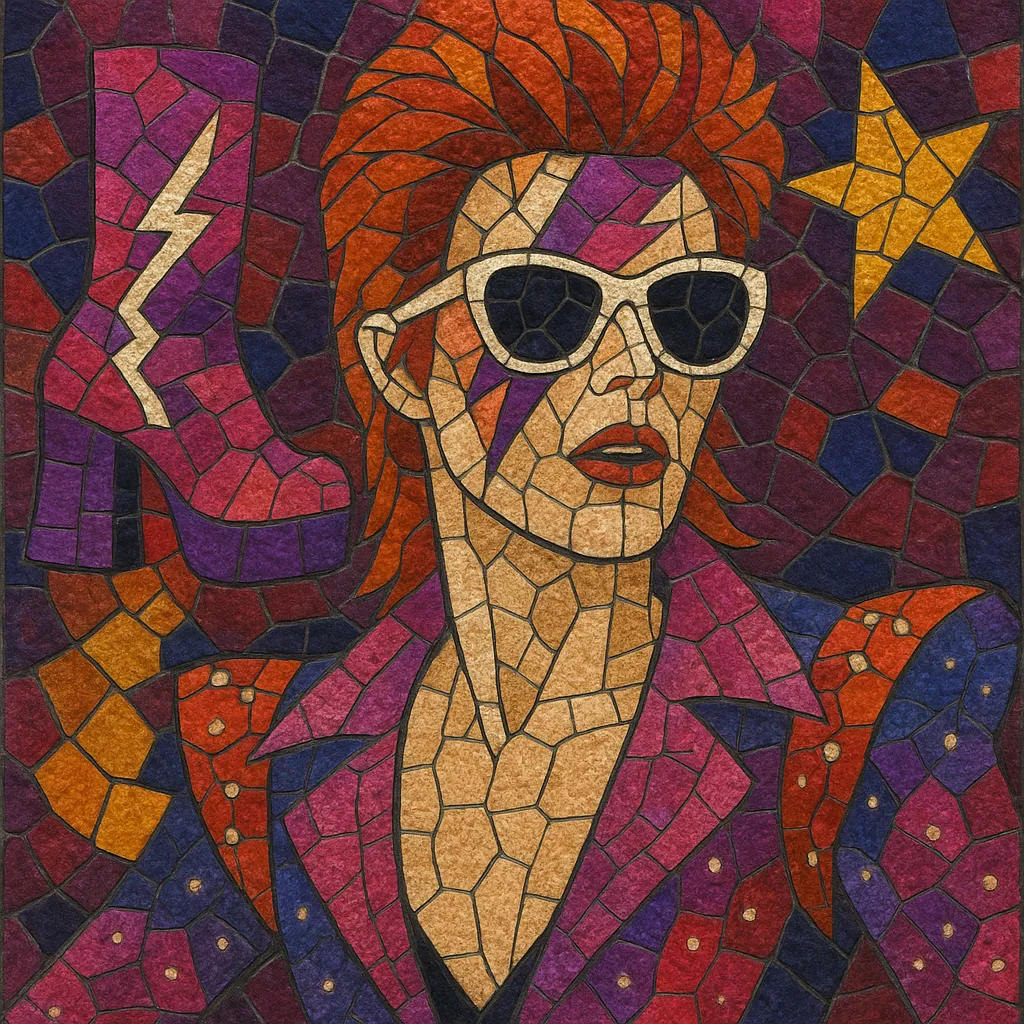Glam (often called glam rock or glitter rock) is a theatrical, hook-driven strain of rock that emerged in the early 1970s.
It pairs stomping, danceable backbeats and chunky guitar riffs with bright, sing-along choruses and a flamboyant visual aesthetic—platform boots, sequins, glitter, and androgynous fashion. While musically rooted in straightforward rock and roll and bubblegum pop, glam embraces artful persona-building and camp, drawing on music hall and vaudeville showmanship.
The result is music that is immediate and catchy yet knowingly stylized, celebrating fantasy, youth, fame, and self-invention.
Glam coalesced in the United Kingdom at the turn of the 1970s. Early sparks included Marc Bolan’s shift from psychedelic folk to electrified, riffy singles as T. Rex and David Bowie’s theatrical reinventions. Rooted in 1950s rock and roll, British beat, and bubblegum pop, the sound emphasized heavy, mid-tempo grooves, crisp guitar hooks, and mass-appeal choruses.
The style exploded on UK television and in teen magazines. Acts like T. Rex, Slade, Sweet, Roxy Music, Mott the Hoople, and Gary Glitter delivered chart-dominating singles with “stomp” beats, gang vocals, and glittering stagewear. Producers and writing teams (e.g., Chinnichap) crafted concise, radio-ready hits. The era normalized androgyny and camp in rock, making visual identity central to the music’s impact.
In the US, Alice Cooper, the New York Dolls, and later KISS fused glam’s theatricality with shock, proto-punk grit, or arena-size spectacle. Sparks bridged UK art-pop and American eccentricity. Glam aesthetics and sensibilities spread across Europe and beyond, seeding scenes that prized performance and persona.
By the mid-1970s, tastes shifted as disco, punk, and art-rock/new wave rose. Glam’s chart dominance waned, but its DNA—big hooks, bold personae, and stylish theatrics—profoundly shaped punk’s attitude, power pop’s songcraft, new wave’s polish, New Romantic fashion, and the 1980s rise of glam metal. Periodic revivals and homages (from Britpop-era nods to 2000s acts like The Darkness and Scissor Sisters) reaffirm its enduring appeal.


